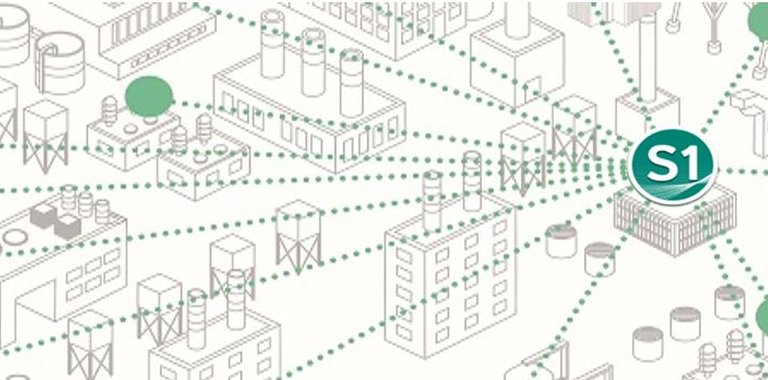
Information gaps, blind spots and the need for holistic plantwide condition monitoring
In our business, there’s a tendency to designate some equipment as “essential” or “critical” and others “non-essential.” But using such a dichotomy confuses our thinking around equipment maintenance and how best to achieve reliability, safety and efficiency.
An analogy can help explain what I mean.
With a car, we’d all agree that the engine or transmission is “critical.” But what about the battery, alternator belt or tires? If any of these are broken, the car won’t run … or won’t for long.
The same applies to our plants.
Sure, there is equipment and technology that is core to the facility’s output, but the “balance of plant” is equally necessary – just try to drive with flat tires or a busted fuel pump!
What this means is that when it comes to plant maintenance, we need to treat ancillary and support equipment like we treat the assets at the heart of our plant, and that means providing similar levels of condition monitoring.
The traditional approach that focuses on online monitoring for certain key equipment and time-based or run-to-fail maintenance approaches for many other machines results in blind spots and incomplete information on other machines, such as pumps, motors, blowers and fans.
Too often, this approach results in unplanned outages and diminished performance, and even when ancillary monitoring occurs, the results offer only a piecemeal view, with information siloed and incomplete.
What’s required is a holistic plant-wide condition monitoring program that performs two primary tasks: 1) monitor both core and ancillary machines and 2) aggregate and analyze the data produced by this monitoring to deliver a holistic picture of plant-wide operations.
Bently Nevada’s System 1† condition monitoring platform provides just such this solution. The platform integrates data from all monitored machines to deliver full plant visibility, along with digital insights for improved operations. Reliability managers can assess the health of nearly all plant machinery and make intelligent maintenance decisions based on real-time data.
The S1 platform deployment is flexible solution and can be on a customer premise, or as part of a Bently Nevada hosted solution. We can also offer our customers the diagnostics capability of S1 through remote monitoring & diagnostics with reliability experts to provide out customer insights to minimize downtime, and improve plant availability. This has proved to be very effective in the most recent pandemic.
The result is a transformative shift from time-based, preventive maintenance to predictive and proactive maintenance based on the actual condition of assets. By identifying issues across both core and ancillary equipment, potential problems can be addressed long before significant damage occurs, or failure happens. This means increased plant uptime, fewer unplanned outages, more efficient management of spares, and more optimal maintenance planning.
Bently Nevada brochure and fact sheet shows predictive maintenance can reduce machinery breakdowns by 70%, downtime by 40% and maintenance costs by 50%, while productivity can rise by 25%.
With more than 50 years of experience developing condition monitoring equipment for the most demanding applications, Bently Nevada offers a full range of monitoring hardware for all types of machines in all types of environments – from wired (e.g., Bently Nevada 2300 and vbOnline Pro) to wireless (e.g., Bently Nevada Ranger Pro) to portable (e.g., Bently Nevada SCOUT200). All integrate seamlessly with System 1.
I’ll illustrate this with an example from Brazil. Eldorado Brasil Celulose, the largest single-line kraft pulp operation in the world, installed our Ranger Pro Wireless sensors on equipment not previously monitored. This monitoring, in conjunction with the System 1 software platform, identified a bearing failure in a pump motor. The plant was able to track the evolution of the failure and take operational steps to mitigate the effect of the failure until maintenance could be scheduled. Emergency maintenance was avoided, saving the company more than USD 1.8 million.
Beyond maintenance and repairs, System 1 supported by plantwide monitoring delivers other benefits. With data available in a unified view, plant managers gain a single source of truth. Data silos are eliminated, helping managers identify opportunities for plant-wide efficiency gains. Root cause analysis and better fault detection are aided because of the data collected leading up to the failure. Learn more: Optimizing Your Plant Condition Monitoring Journey Can be More Effective with a Single Vendor for All Your Needs.
What’s so exciting is there’s even more we can do with plantwide condition monitoring. The next version of System 1 – System 1 Evo – further empowers operators by integrating process and control system data for even greater operational visibility. High-speed data storage capabilities allow the historizing of all data at rates up to once-per-second and then its replication for sharing across the business network. Combined with next-generation wireless and portable monitoring hardware, the opportunities to respond and optimize plant performance will continue to grow. See: Plant-Wide Monitoring with Clarity and Context.
As we adjust to the COVID-19 economic reality and prepare for what comes next in our industries, we can’t afford to rely on a conventional “critical” asset monitoring approach.
Thriving in today’s world requires fresh thinking and a new approach, and that means adopting a holistic plant-wide condition monitoring solution.

